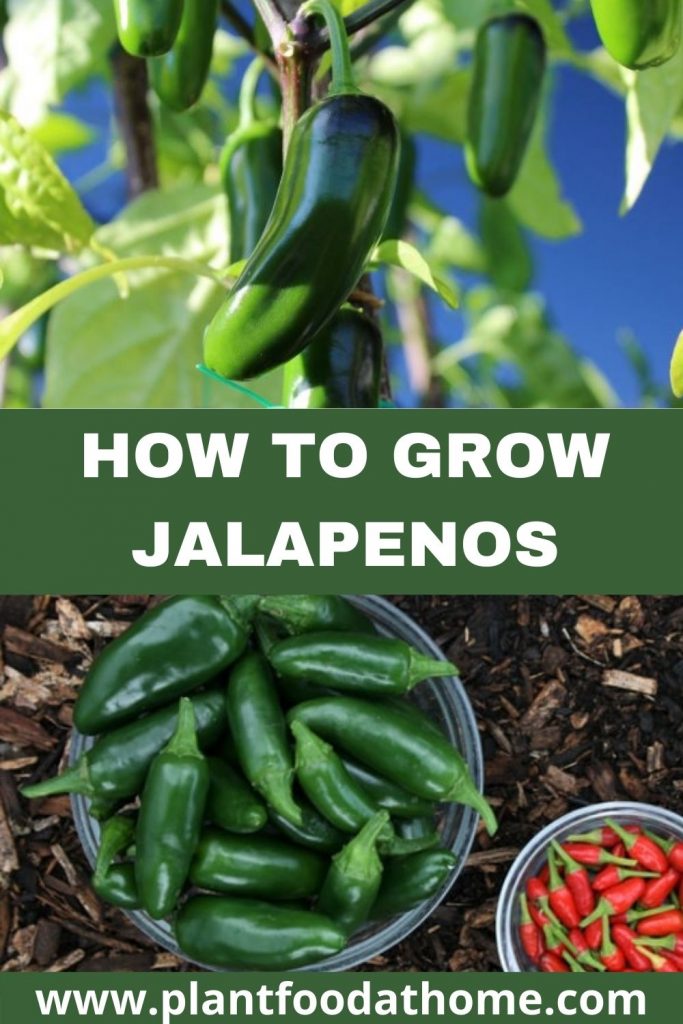Jalapenos are the most common, and most popular, type of pepper grown around the world. Their sweet spice lets people get some of that delicious heat, without overwhelming their taste buds. And growing jalapenos is not only fun but easy! Jalapenos are a fairly hardy plant that can produce a lot of fruit with a little care. Read on to learn all about caring for jalapeno plants and growing your own jalapeno peppers.
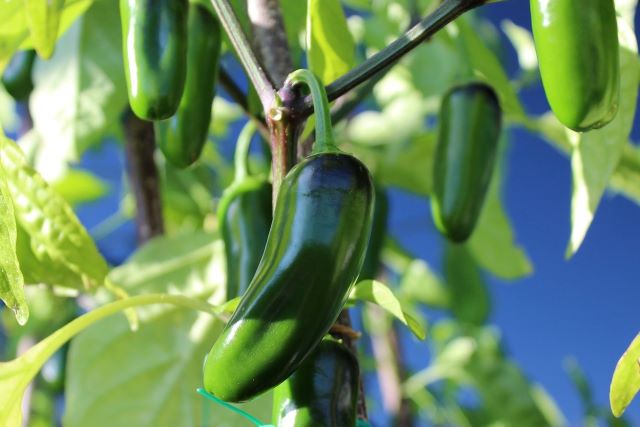
Table of Contents
- Jalapeno Varieties
- Ideal Growing Conditions for Jalapeno Peppers
- Water Requirments for Jalapeno Peppers
- How to Grow Jalapenos From Seed
- How to Grow Jalapenos From Seedlings
- Growing Jelapenos in Pots
- How Long Does it Take to Grow Jalapenos?
- When Are Jalapenos Ready to Harvest and How to Harvest Them
- Storing Jalapenos
- Pests and Disease
- Conclusion
- Recommended Products
Jalapeno Varieties
There are many varieties of jalapeno chili peppers, which isn’t surprising considering the plant’s popularity. The most common type is Tam jalapenos, which you can find at almost any gardening store, nursery, or seed distributor. Some other common varieties include:
- Orange spice
- Big Jim hot pepper
- Craig’s grande jalapeno
Most varieties of jalapeno share very similar needs, so whatever variety you have, you should be able to take care of it easily. If you have a rare variety, it never hurts to do some research to find out its specific needs.
Jalapeno plants can grow to 2-3 feet (60-90cm) and should be grown around 20 inches (50 cm) apart.
Ideal Growing Conditions for Jalapeno Peppers
Climate for Growing Jalapenos
Jalapenos are originally tropical plants, so they do better in warm climates, but they can be grown in more mild climates as well. The seedlings germinate best in temperatures between 70-80°Fahrenheit (21-27°C) and grow best in temperatures 70-86°F (21-30°C) outdoors.
Sun Requirements for Jalapenos
In terms of sun, jalapenos love it. They need at least 8 hours of full sunlight every day. It’s not a good idea to plant them with other plants that might block the sun, like cucumbers. Give them plenty of space to soak up all the sun they need.
Ideal Soil for Growing Jalapenos
Jalapeno peppers love soil that is well-drained and loamy, with a pH level between 6.0 and 6.8 being ideal. It’s important that the soil isn’t too heavy, so it doesn’t get waterlogged and damage the plant’s roots.
Additionally, the soil should be full of organic matter. Compost or other natural fertilizers such as aged manure will keep the soil full of all the nutrients that jalapenos need to thrive.
Fertilizer for Jalapeno Chili Peppers
When it comes to fertilizing, jalapenos need lots of nutrients, so be prepared to use a lot of fertilizer, and use different balances of nutrients at different growth stages. Instead of using synthetic fertilizers, you can purchase an all-natural balanced fertilizer like this one, or even make your own through composting.
Right after planting, the jalapenos will need a lot of nitrogen. Two to three weeks after germinating, they will need another batch of fertilizer with a balance of nutrients. And again as they mature and begin to flower to encourage healthy flowering and fruiting.
Water Requirments for Jalapeno Peppers
Lastly, water. It’s best to water jalapeno plants in the morning, and let the leaves dry out throughout the day. Don’t flood them with water, but instead keep the soil evenly moist.
Whatever you do, don’t let water pool up around the base of the plant. This could be harmful to them, and too much water could lead to root problems. Just provide them with enough to keep the soil slightly moist, and pay attention to the plant: it will tell you if it needs something different.
How to Grow Jalapenos From Seed
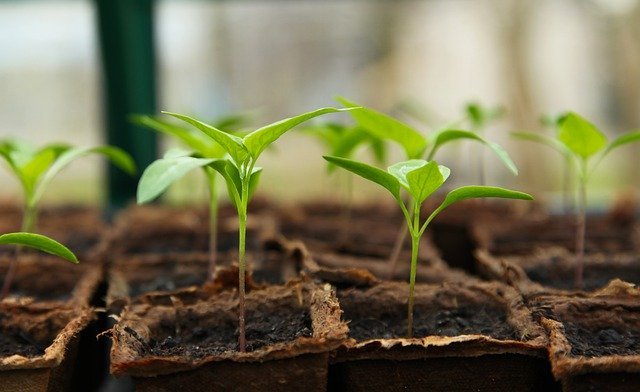
If you choose to grow jalapeno peppers from seed, it’s generally best to start the seeds indoors, 8 to 10 weeks before the last frost in your area. If you want to sow the seeds directly into the ground, wait until nighttime temperatures aren’t dropping below 60°F (15°C), to make sure the soil stays warm.
Again, the seeds need a temperature between 70-80°Fahrenheit (21-27°C) to germinate. If your indoor temperature isn’t right, you can always use seedling heating mats to help get the seeds to the right temperature.
You can choose to use seed trays, paper towels, or other methods of starting your seeds. I prefer small pots. Whatever you do, be sure to monitor the temperature, and keep them in a loose, well-draining soil such as this organic seed raising mix.
You will also need to make sure the seedlings have a lot of moisture. If the air in your home is more dry, you can mist the plants daily, get a humidifier, or fill a tray with pebbles, pour some water in, and place it near your plants. All of these will help give the plants the humidity they need.
Of course, the plants will also need light once they sprout. It is best to place them in south-facing windows that get a lot of sun, but any window can work as long as it gets a lot of light. And if you don’t have good windows, or want to provide the perfect conditions, you can always get a set of grow lights. You can read more on How to Start Vegetable Seedlings Under Grow Lights here.
Jalapenos can be more slowly growing than vegetables like tomatoes, so just be patient and continue to give them what they need. They can take 10-14 days to germinate.
Transfering Jalapeno Seedlings Outdoors
The jalapeno plants are ready to go outside when they are 2-6 inches tall, have at least two sets of leaves, and the nighttime temperatures are not dropping below 60 degrees. When these conditions have been met, you can begin hardening off your seedlings — adjusting them to outdoor life.
Start by putting them near a door that gets used often, so they can start getting a feel for the outdoor air. After a week or so, place them outside for a few hours (still in their pots!) in a sheltered area. Increase the outdoor hours daily and after about another week, they should be ready to go in the ground!
How to Grow Jalapenos From Seedlings
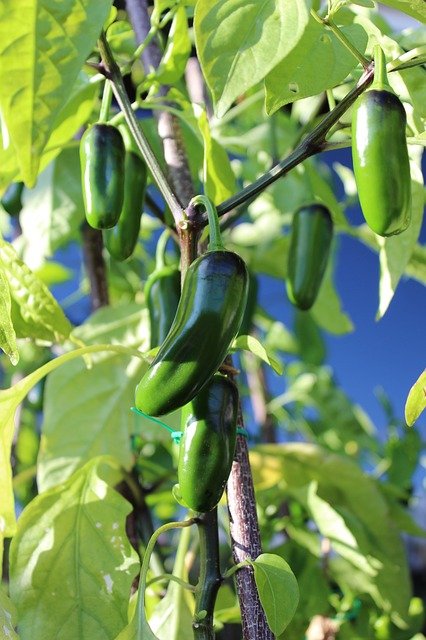
To grow your Jalapeno seedlings in the garden, make sure they have well-draining, loamy, and nutrient-rich soil to grow in.
Choose a sunny spot in the garden and plant Jalapeno’s 19 inches (50cm) apart, to give them room for their roots to spread out.
Later you may want to give your jalapenos some support, like a garden stake, as adult plants can grow to 3 feet (1 meter) tall and produce a lot of peppers.
Use organic mulch around the plants to help retain soil moisture and reduce weeds.
Keep an eye on the soil moisture while the seedlings are young. They may need watering daily until they establish. Try to avoid overhead watering as too much water on the leaves can weigh them down, promote disease and slow their growth.
Otherwise, refer to the care guide above, and have patience. Soon your jalapeno peppers will be producing delicious fruits that are ready for harvesting.
Growing Jelapenos in Pots
If you don’t have the in-ground garden space you can grow jalapeno peppers in pots. This also allows you to grow them on balconies, patios or indoors, provided you have a space with enough light. Additionally, you can grow potted jalapenos from seeds or seedlings.
In general, potted jalapenos will have very similar care to in-ground plants. But there are a few differences you should be aware of:
- Pot size: of course, you need to choose a good-sized pot. Since their roots like to spread out, a pot 12 inches in diameter as a minimum is good. In terms of gallons, you can do anything from 4 to 10-gallon pots. Ensure the container you choose to grow in as excellent drainage.
- Soil: use a good quality organic potting mix to give your jalapenos the right soil nutrients to thrive.
- Water: since your plants are in a pot, keep an eye on the soil moisture level as they can dry out more quickly. Conversely, consider bringing them indoors or under shelter during heavy storms to prevent too much water from waterlogging them.
If you keep these things in mind, then growing jalapeno plants in pots will be just as easy for you as growing them in the ground.
How Long Does it Take to Grow Jalapenos?
From germination (when the seeds sprout) it takes 3 to four months for Jalapeno plants to be fully mature and produce fruit that can be harvested. If you start the plants from seedlings, it could be 2 to 4 weeks less than that.
When Are Jalapenos Ready to Harvest and How to Harvest Them
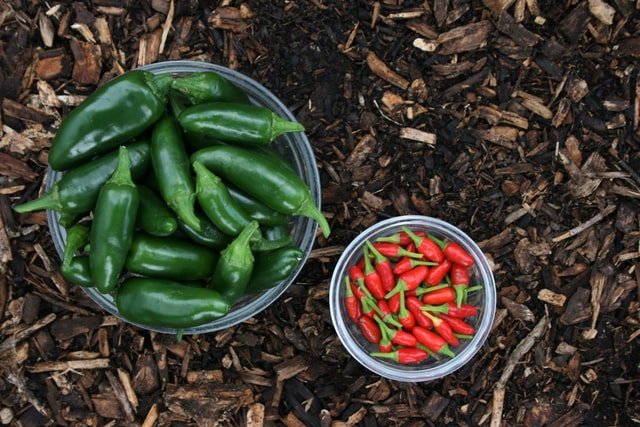
At a mature size, Jalapenos are 2-4 inches (5-10cm) long and 1-1.5 inches (2.5-3.8 cm) wide.
Unlike most peppers, jalapenos are usually harvested before they have become completely ripe. This is why they are green, and helps them keep their flavor.
Jalapenos are ready to be harvested when they are an even-colored, medium to dark green all around. The fruit will feel firm to the touch, not soft. At this stage, they can be used raw or cooked.
If you’d like, you can let them ripen further. They will turn yellow, then red. They can be harvested at any point once they begin to change color. When they are fully red, the skin will be slightly softer, though still firm.
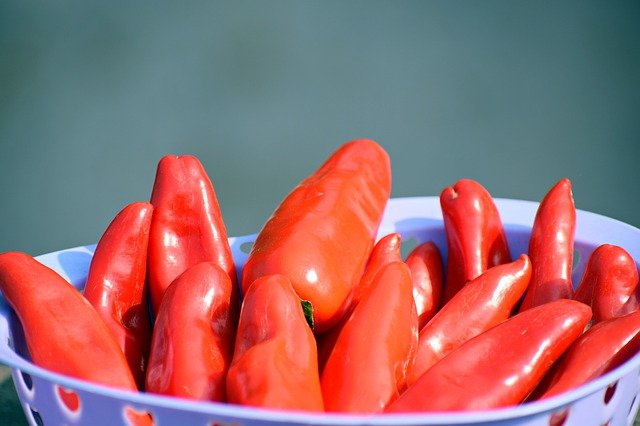
To harvest jalapenos, simply take hold of the fruit and cut the stem about half an inch above the pepper, using clean, sharp pruning shears. Don’t just pull jalapenos off the plant, as this can damage the plant.
If you’re looking for some delicious ways to eat your jalapenos, well you can’t go past Jalapeno Poppers. Here are some recipes to try:
Baked Jalapeno Poppers from Cookies and Kate
Jalapeno Poppers from Spend With Pennies
Best Ever Jalapeno Poppers from Allrecipes
Storing Jalapenos
Jalapenos taste best fresh, but they can also be stored if you don’t want to use them right away. To store them, simply place them in a paper bag and put them in the crisping drawer in your fridge. They can stay good for up to a week this way. Don’t use a plastic bag, as they may go bad faster that way.
If you want to store them longer, jalapenos can also be frozen whole, chopped, or sliced. They will last for much longer this way, but will end up a little bit softer. Frozen jalapenos are usually best used in cooking.
Jalapeno peppers can also be dried and stored in jars. Use a very low-temperature oven or a dehydrator.
Pests and Disease
There are a few growing problems, diseases, and pests that can bother your jalapeno plants. Let’s take a brief look at what you can do for each:
Common growing problems:
- If your jalapeno plant leaves are drooping or rolling downwards, they are probably getting too hot and not getting enough water.
- If your jalapeno plant is still small and produces flowers, pinch them off to prevent them from fruiting, as that can stunt growth. Wait until the plant is bigger to allow the flowering.
Pests
- Aphids: spraying with water and hand cleaning the leaves can help; or spray them with neem oil.
- Spider mites: again, neem oil can help, but you can also get rid of these pests by introducing helpful insects to the garden.
- Leafminers: once again, neem oil will deter them. Also, remove any leaves that show signs of infestation right away.
- Various moth larvae: combining crushed garlic, vegetable oil, dish soap, and water into a spray can get rid of these.
Diseases
- Blight: can be easily avoided by not over-watering.
- Powdery mildew: this DIY milk spray can help.
- Leaf spot: this tricky fungus can usually be helped with a mixture of dish soap, baking soda, and water, and by removing heavily damaged leaves.
Related: Brown Spots On Peppers: Causes And Solutions | 7 Bell Pepper Pests and How to Get Rid of Them
Conclusion
Now you know everything you need to grow your own jalapeno peppers! Remember to be patient and provide the right growing conditions, and pretty soon you’ll have bowls and bowls of delicious, home-grown peppers.
Recommended Products
- Organic Seed Raising Mix
- Seedling Heat Mat
- Grow Light
- Organic Potting Soil
- Horticultural Neem Oil
- Dehydrator
Further Reading:
- Bell Peppers Not Germinating? 6 Tips to Sprout Them
- Bell Pepper Flowers But No Fruit? Causes and Solutions
- Brown Spots On Peppers: Causes And Solutions
- Why Are My Bell Peppers So Small? Answered!
- Why Are My Chilies Not Ripening? Causes And Solutions
- How To Grow Eggplant – A Beginners Guide
- How To Grow Tomatoes In Pots
- Growing Beans: Planting, Caring for, and Harvesting Beans
- How To Grow Okra: Planting, Caring, And Harvesting Okra
